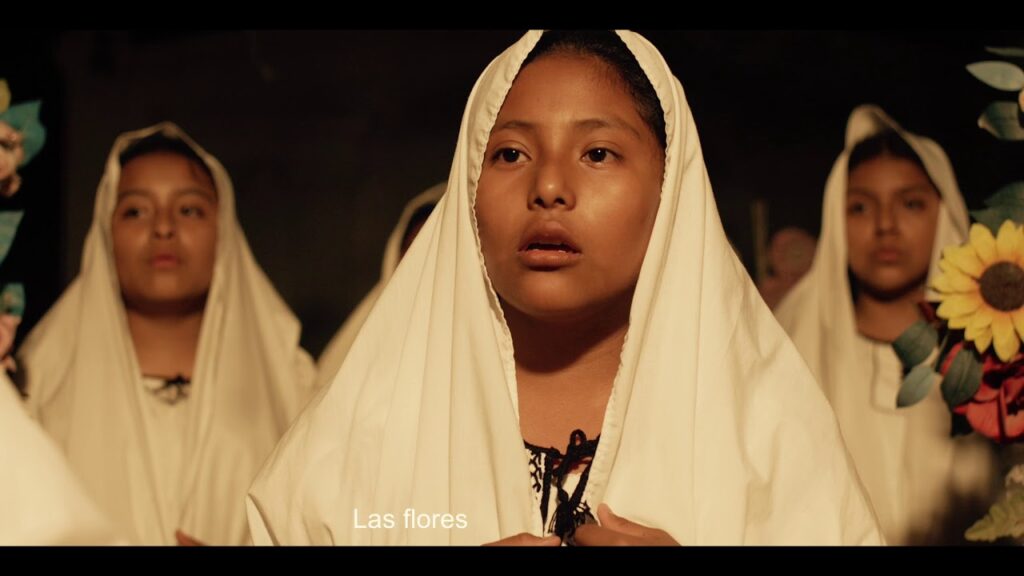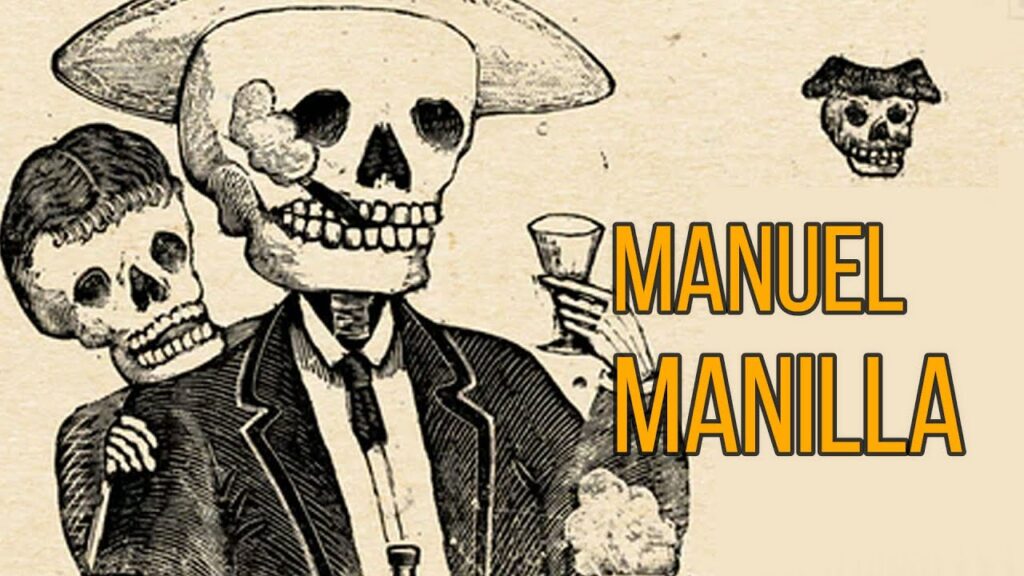Exploring the Legend of La Llorona in Xochimilco
Xochimilco, a borough of Mexico City, is famed for its extensive network of canals—all that is left of the ancient Lake Xochimilco. Visitors from around the globe come here to experience the tranquil beauty of the floating gardens, but few can shake off the eerie presence of the legendary La Llorona. As you glide through the foggy waterways on a traditional trajinera, you might hear the distant, haunting cries of this weeping spirit.
The legend of La Llorona, meaning “The Weeping Woman,” is deeply woven into Mexican folklore. She is said to be the lost soul of a mother who, in a fit of madness, drowned her own children and then spent eternity roaming the waterways in search of their bodies. The chilling part of this tale is when La Llorona’s wails are heard, it is said to foretell death. The dark stillness of Xochimilco’s canals at night creates the perfect backdrop for this bone-chilling story.
Learning the Legend firsthand from the locals is an essential part of the experience. Tours can be booked that not only take visitors through the scenic canals but also immerse them in the cultural tradition of this haunting narrative. As night falls and the mist rises from the water, guides spin tales of past encounters and share the lore behind this infamous apparition. The pervasive sense of history and myth makes the experience intensely atmospheric.
Though La Llorona is a spectral figure steeped in legend, Xochimilco offers tangible ways to delve deeper into her story. Each year on select evenings around Day of the Dead celebrations, the canals come alive with dramatic reenactments of La Llorona’s tragic tale. These performances, combined with the traditional marigold decorations and candlelit altars, provide a captivating glimpse into Mexico’s rich and mystical traditions.
While many visitors are content to experience the thrills from the safety of their boats, the more adventurous might explore the darker nooks of Xochimilco. Islands like the famous Island of the Dolls (Isla de las Muñecas), are local oddities that continue to fuel the mystique of La Llorona. The island, covered with countless dolls, is rumored to be dedicated to the lost soul of a young girl, further intensifying the area’s reputation as a place suspended between the realms of the living and the dead.
Nahuatl Chants: The Sounds of the Past in Xochimilco
Delve into the enchanting world of Xochimilco, a UNESCO World Heritage site, where the ancient sounds of Nahuatl chants still echo along the canals. As twilight begins to blanket the sky, the enigmatic cadence of these ancestral songs creates a mystical atmosphere. The melodies, often performed by local singers known as griteros, are a vibrant representation of Mexico’s rich cultural tapestry, tracing back to the times of the Aztecs.
The significance of Nahuatl chants in the day-to-day life of Xochimilco can’t be overstated. These are not only performances but rituals that seamlessly blend the past with the present, offering visitors an auditory glimpse into the spiritual beliefs and historical events of the region. Exploring the waterways on a traditional trajinera, tourists are serenaded by musicians who preserve this art form with passion and dedication, ensuring that every verse resonates with authenticity and depth.
Attendees are often encouraged to participate in the experience, learning simple Nahuatl phrases and refrains to join in the community of voices. This interaction is a testament to the living history of Xochimilco, where language and music serve as a bridge between generations. It’s an opportunity to not just observe, but to become an integral part of the historical narrative that these chants have carried forward through centuries.
If you’re seeking an adventure that transcends mere sightseeing, the Nahuatl chants of Xochimilco are a doorway to the heart and soul of Mexico. The acoustic journey comes to life with the rhythmic paddling of the oars, the soft rustling of the willows, and the picturesque setting of colorful trajineras floating amidst the scenic landscape. It’s a moment where the past isn’t just remembered; it’s vibrantly alive and calling for you to listen closely.
Traditional Dances: A Glimpse into Xochimilco’s Cultural Heritage
Stepping into Xochimilco, visitors are often captivated by the vibrant and expressive traditional dances that are deeply rooted in the region’s cultural heritage. These performances are not just for entertainment; they serve as a living history, telling stories of the community’s past and present. One of the most iconic dances is “La Danza de los Viejitos” (The Dance of the Little Old Men), which humorously represents the vitality of the elderly, despite their apparent fragility. Dancers wear masks of old people and move to the rhythm in a playful and energetic manner, often drawing laughter and joy from the audience.
Another unmissable spectacle is the “Danza de los Quetzales,” named after the sacred bird of the ancient Aztecs. With colorful feathers and elaborate costumes that shimmer in the sunlight, the dancers elegantly mimic the movements of the Quetzal, symbolizing the beauty and freedom of the bird. This dance is a testament to Xochimilco’s connection to nature and its indigenous roots, showcasing the region’s respect for the environment and its inhabitants. It is a powerful performance that leaves an imprint on the hearts of those who witness it, reflecting the area’s profound sense of identity and pride.
Around the flower-laden canals and chinampas of Xochimilco, visitors might also encounter the vibrant “Danza de los Arrieros,” a dance that pays tribute to the muleteers who played a crucial role in the community’s agricultural history. Clad in traditional attire complete with hats and boots, the dancers stomp to the rhythm of the music, imitating the journey of the arrieros through the valleys and roads of old. This dance is not just a spectacle to behold; it is a rhythmic chronicle of the everyday lives and struggles of the Xochimilco people, ever resonant in the region’s ongoing storyline.
The Vibrant Music of Xochimilco: An Auditory Delight
The canals of Xochimilco, a UNESCO World Heritage Site, offer more than just a vivid visual spectacle. As visitors float on the colorful trajineras, traditional flat-bottomed boats, they become part of a rich cultural tapestry woven with the threads of music. The melodies of mariachis mingle with the natural sounds of water and wildlife, creating an ambiance that is both lively and serenely enchanting. It’s a place where every note tells a story, and the vibrant music is as much a part of the experience as the scenic journey through the canals.
Amidst the floating gardens, it is common to hear the strumming of guitars and the soulful sounds of the vihuela and guitarrón, as groups of musicians known as mariachis play their harmonious tunes. Dressed in their elaborate charro outfits, these performers are not just musicians; they are storytellers, whose songs capture the heart of Mexico’s culture and history. The range of music reflects the country’s diverse cultural heritage, featuring everything from romantic ballads and tales of revolutionary heroes, to the more modern rhythms influenced by the sounds of Mexico City.
For those seeking an immersive musical escape, Xochimilco delivers an auditory feast. The cheerful cries of “¡Mariachi!” herald the arrival of these traditional ensembles as they traverse the waterways, ready to serenade passengers with their robust repertoire. Whether visitors seek a melody from the past or prefer the contemporary compositions that illustrate the vibrant evolution of Mexican music, Xochimilco is a destination that resonates with the joyous spirit of its music. The floating fiestas, brimming with singing and dancing, embody the warmth and conviviality of Mexican hospitality.
A Multicolored Spectacle: Witnessing La Llorona’s Tale in Xochimilco
Every year, as night falls over the ancient water canals of Xochimilco, an eerie transformation sweeps across the area. Far from the bustling streets of Mexico City, this network of waterways and artificial islands, known as chinampas, becomes the stage for one of Mexico’s most haunting and traditional folktales: the legend of La Llorona. Tiny trajineras, traditional flat-bottomed boats, glide silently through the mist, and you can almost hear the distant wails of the fabled Weeping Woman said to be forever searching for her lost children.
The story of La Llorona is a tapestry woven from Aztec mythology and Spanish folklore, creating a ghost story that has been passed down through generations. As the legend goes, La Llorona was a woman who, consumed by grief and madness after the loss of her children, wanders the earth for eternity, her mournful cries a harbinger of misfortune. This tale is brought to life in Xochimilco every fall with a spectacle of colorful costumes, chilling narrations, and dramatic reenactments, pulling visitors into the heart of this chilling folktale.
As the trajineras drift through the dark waters, actors and storytellers dressed in vibrant garments recount the fateful story of La Llorona. Their voices, filled with passion and sorrow, echo against the still waters as they depict the tale’s tragic heroine. The experience is both a visual and auditory feast; vibrant flowers and a multitude of candles line the boats and the pathways, setting the scene and casting flickering shadows that dance eerily on the water’s surface, further enhancing the supernatural ambiance of the night.
The La Llorona event in Xochimilco is not only a cultural experience but an essential Mexican tradition that both honors the country’s history and entertains its participants in a truly immersive way. With each bend of the twisting canals, guests come face to face with the legacy of a story that remains engraved in the heart of Mexican folklore. It’s an unforgettable journey through the past, filled with the sounds, sights, and emotions of a legend that refuses to be forgotten, a perfect encapsulation of Mexico’s rich tapestry of storytelling.



